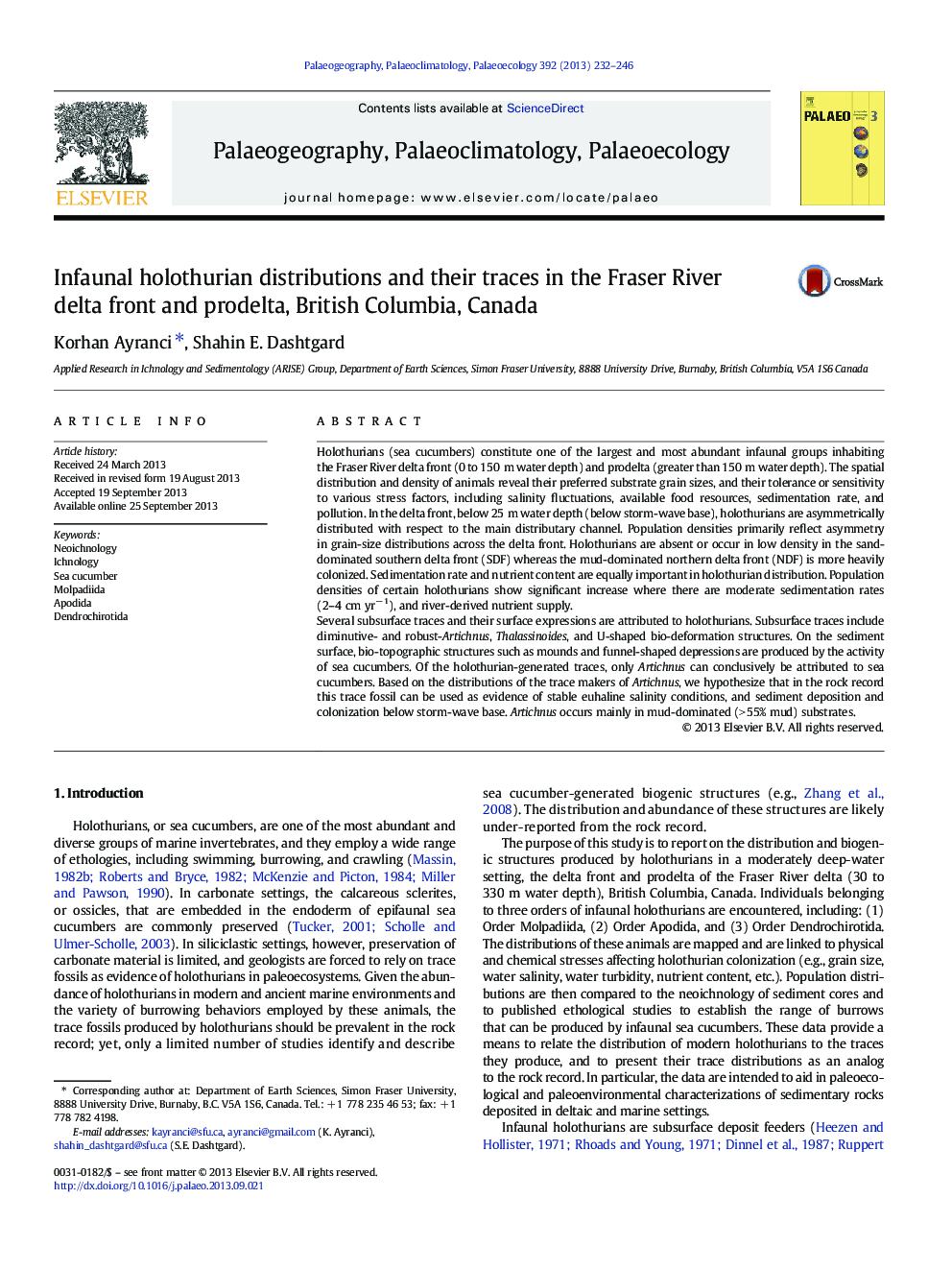| Article ID | Journal | Published Year | Pages | File Type |
|---|---|---|---|---|
| 4466442 | Palaeogeography, Palaeoclimatology, Palaeoecology | 2013 | 15 Pages |
•Holothurian traces can be used to predict paleo-environmental conditions.•Holothurians mainly prefer to inhabit muddy substrates.•Holothurians are mainly restricted to stable, euhaline salinity conditions.•We confirm that Artichnus is a holothurian-made trace.•Artichnus may indicate suspension settling of river-derived sediment.
Holothurians (sea cucumbers) constitute one of the largest and most abundant infaunal groups inhabiting the Fraser River delta front (0 to 150 m water depth) and prodelta (greater than 150 m water depth). The spatial distribution and density of animals reveal their preferred substrate grain sizes, and their tolerance or sensitivity to various stress factors, including salinity fluctuations, available food resources, sedimentation rate, and pollution. In the delta front, below 25 m water depth (below storm-wave base), holothurians are asymmetrically distributed with respect to the main distributary channel. Population densities primarily reflect asymmetry in grain-size distributions across the delta front. Holothurians are absent or occur in low density in the sand-dominated southern delta front (SDF) whereas the mud-dominated northern delta front (NDF) is more heavily colonized. Sedimentation rate and nutrient content are equally important in holothurian distribution. Population densities of certain holothurians show significant increase where there are moderate sedimentation rates (2–4 cm yr− 1), and river-derived nutrient supply.Several subsurface traces and their surface expressions are attributed to holothurians. Subsurface traces include diminutive- and robust-Artichnus, Thalassinoides, and U-shaped bio-deformation structures. On the sediment surface, bio-topographic structures such as mounds and funnel-shaped depressions are produced by the activity of sea cucumbers. Of the holothurian-generated traces, only Artichnus can conclusively be attributed to sea cucumbers. Based on the distributions of the trace makers of Artichnus, we hypothesize that in the rock record this trace fossil can be used as evidence of stable euhaline salinity conditions, and sediment deposition and colonization below storm-wave base. Artichnus occurs mainly in mud-dominated (> 55% mud) substrates.
